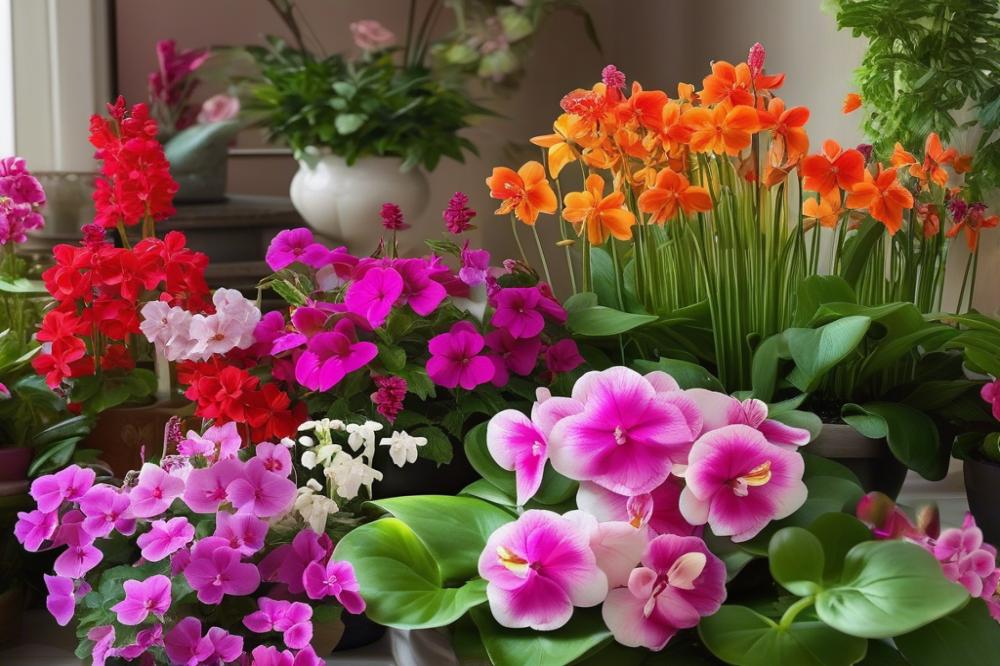The Benefits of Growing Wild Violets in Your Garden
Wild Violets are more than just attractive flowers. They serve as excellent ground covers, transforming any space into a vibrant haven. Known for their colorful blooms and lush green foliage, these perennial plants bring both beauty and utility to gardens.
Choosing native plants is important for any eco-friendly gardening strategy. Wild violets flourish in various conditions, particularly in shaded areas. When planted, they require minimal maintenance, making them a practical option for busy gardeners. Their resilience helps support local biodiversity, which is increasingly vital in today’s environment.
Additionally, pollinator-friendly flowers are critical for sustaining the ecosystem. Wild violets attract bees, butterflies, and other helpful insects, promoting a thriving garden community. Their edible flowers also add a unique touch to salads and garnishes, enhancing both flavor and visual appeal.
Incorporating these amazing plants into your garden not only beautifies your space but also supports health and sustainability. Their colorful presence can bring joy while contributing to a more eco-conscious world. Take into account the many advantages these charming plants offer. Their ability to adapt and thrive makes them a fantastic choice for anyone seeking to enhance their outdoor spaces. Consider adding wild violets to your garden and enjoy the numerous benefits they bring.
Wild Violets as Ground Cover
Wild violets serve as exceptional ground cover for gardens. These perennial plants adapt well to different environments, including shady areas where many other flowers struggle to grow. Their shade tolerance makes them perfect for spots under trees or beside structures that block sunlight.
Low maintenance needs make them appealing for busy gardeners. Once established, these native plants require very little care. They thrive naturally, meaning you won’t have to fuss over them, and they won’t demand constant watering or special fertilizers.
These plants contribute to soil health and stability. Their roots help prevent erosion, keeping soil in place even during heavy rains. This promotes healthier ecosystems in your garden, adding to the biodiversity that supports various wildlife.
Pollinator friends, such as bees and butterflies, are also drawn to their colorful blooms. By planting these flowers, you create an inviting habitat for important species. This is key for eco-friendly gardening and enhancing the overall environment.
Aside from being pretty, the flowers themselves are edible. You can add them to salads for a splash of color or use them to decorate desserts. Their versatility adds value to your garden while helping to create a more varied landscape.
Choosing wild violets as ground cover results in a lush, vibrant space. Their ability to flourish in diverse conditions along with their beneficial characteristics makes them a wise choice for any garden.
Biodiversity and Ecosystem Benefits
Growing wild violets in your garden can significantly enhance biodiversity. These perennial plants play a vital role in supporting various wildlife. Notably, they serve as a food source for numerous pollinators. The vibrant, colorful blooms attract bees, butterflies, and other insects that are essential for a healthy ecosystem. When pollinators flourish, it promotes the growth of many other plants and flowers, creating a more vibrant garden.
When you incorporate native plants into your landscape, you directly contribute to your local environment. Many animals rely on these plants for survival. For example, birds often seek shelter and food from wild violets and similar species. These native flowers provide natural habitats, allowing local wildlife to thrive. Furthermore, they are shade tolerant, making them perfect for areas that do not receive direct sunlight.
Choosing to grow a pollinator-friendly garden can lead to a flourishing environment. Eco-friendly gardening practices are essential for maintaining the health of our planet. These low-maintenance flowers not only beautify your space but also serve a purpose. They can act as effective ground cover, preventing soil erosion and enhancing soil quality. This also reduces the need for chemicals, which can harm beneficial insects.
In addition to their ecological advantages, some of the flowers are edible. This unique quality allows gardeners to enjoy both the aesthetic and culinary benefits. Incorporating wild violets into your meal can add a lovely touch and boost flavor. Their presence in your garden will also encourage others to appreciate the importance of biodiversity.
Increasing diversity in your garden is an important step for supporting overall ecosystem health. More plant species mean more food options for different wildlife. As a result, your garden becomes a sanctuary for creatures of all kinds. By planting a variety of native plants, you contribute to a thriving ecosystem that stands to benefit everyone.
Aesthetic and Culinary Appeal
The colorful blooms of wild violets bring a refreshing charm to any garden setting.
These beautiful perennial plants grace the landscape with shades of purple, blue, and white. Their vibrant flowers create a tapestry of color, especially in spring. Gardeners appreciate how these native plants can thrive in various conditions, adding beauty wherever they are planted.
Beyond their aesthetic value, these flowers offer culinary possibilities. Edible flowers are perfect for adding a touch of elegance to salads and desserts. They can even be used to make herbal teas. The delicate flavor and stunning appearance enhance any dish, making meals more appealing and nutritious.
Low maintenance and shade tolerant, they thrive in less-than-perfect conditions. This makes them ideal for various gardening styles. As a ground cover, they prevent soil erosion while providing a habitat for small wildlife. Planting these flowers contributes to biodiversity and supports a healthy ecosystem.
Gardeners focused on eco-friendly gardening will find wild violets to be pollinator friendly, attracting bees and butterflies. Such friendly visitors play an essential role in maintaining the balance of our gardens. With their beautiful blooms and functional benefits, these plants serve both beauty and utility.
Integration with Other Perennial Plants
Wild violets bring many advantages to a garden. They pair beautifully with a variety of perennial plants. Consider planting them alongside native plants like coneflowers or black-eyed Susans. These combinations offer a striking contrast with their colorful blooms.
Low maintenance is another benefit of incorporating wild violets. Once established, they thrive in numerous conditions. Mixing them with shade tolerant plants makes for an eye-catching display in darker areas. Hellebores or ferns can create a lush backdrop to highlight those delicate violet flowers.
Biodiversity benefits greatly from these vibrant plants. They attract various pollinators, which helps maintain a healthy ecosystem. Add them near flowering herbs or vegetables; the edible flowers can enhance culinary dishes while benefiting local bees.
Utilizing wild violets as ground cover can improve soil health. Their thick foliage prevents weeds and retains moisture. Pairing them with other resilient ground covers, such as creeping thyme, makes for an eco-friendly gardening practice. This can be a win-win for both your garden and the environment.
The adaptability of wild violets allows you to creatively design your garden space. Mixing them with daylilies or hostas gives an engaging dynamic. Diverse displays will certainly captivate the eye and invite visitors to explore.
They integrate seamlessly into any garden theme. Whether you’re cultivating a pollinator-friendly paradise or a shaded retreat, these plants are versatile. The end result is a visually appealing, diverse landscape that thrives year after year.
Final Thoughts on Incorporating Wild Violets
Adding wild violets to your garden offers numerous benefits that can enhance your outdoor space. First and foremost, these hardy perennial plants require very little maintenance. They grow naturally in various conditions and adapt well, making them an excellent choice for busy gardeners.
Another significant advantage is their appeal to pollinators. Bees and butterflies are drawn to the vibrant flowers. By including these native plants, you’ll create a more inviting environment for these essential creatures. Their presence helps to increase biodiversity, which is crucial for a healthy ecosystem.
Furthermore, wild violets can add a splash of color and beauty to your landscape. Their delicate blooms are stunning, and they can thrive in both sunny and shaded areas. This versatility allows you to plant them in diverse locations throughout your garden.
In summary, consider embracing these incredible plants. They combine low maintenance with ecological benefits, making them a smart choice for anyone looking to improve their garden. By choosing wild violets, you contribute to a more beautiful, diverse, and sustainable world.


